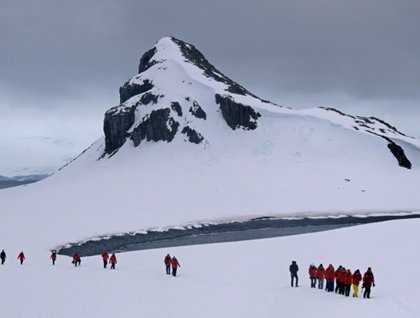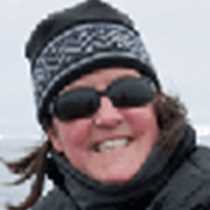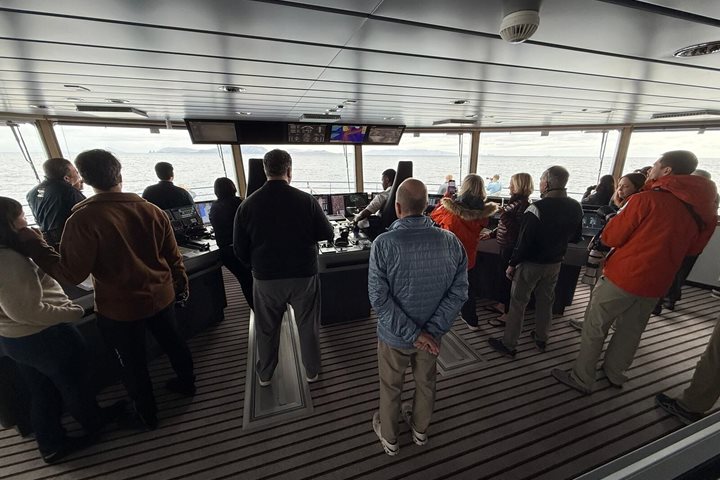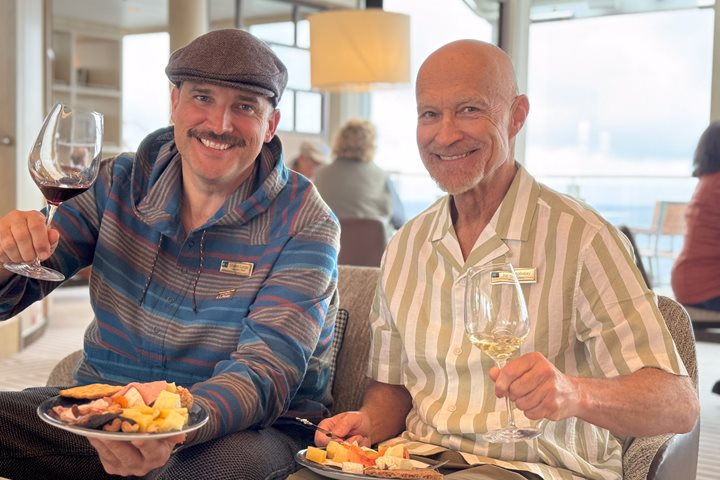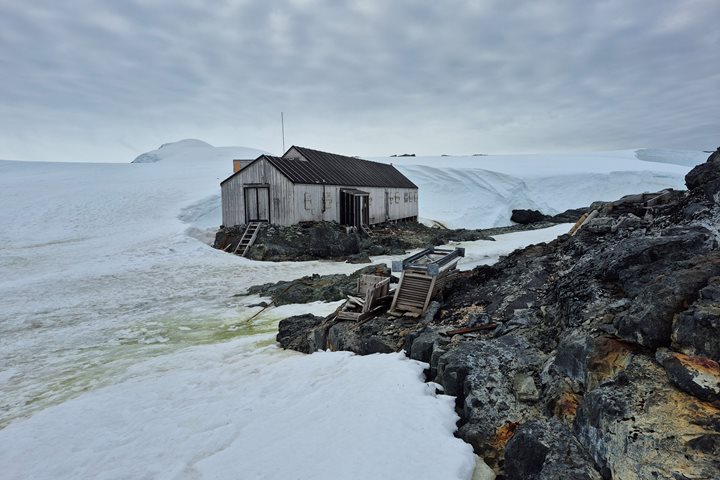This morning we had our first glimpse of a large iceberg at 4:30 a.m. One of the early bird guests spotted it as we continued to cruise south towards the South Shetland Islands. It was a bit foggy as we approached the outer islands, but just before lunch our Captain Oliver Kruess took us fairly close to Barrentos Island so we could see our first glimpse of the chinstrap penguin colony.
Then we had the chance to see our first humpback whales. This was a female with a calf of the year and they were very busy feeding in the rich productive waters on the edge of English Strait. This mom is particularly hungry as she did not feed at all during the four to five months she spent on the breeding grounds off the coast of South America. She now travels down to the waters surrounding the Antarctic to feed during the summer, and her calf will learn the migration route it will now travel throughout its life.
In the afternoon we had our first opportunity to step ashore on Half Moon Island. The most adventurous of the group decided to go for a longer walk up a hill and across the island for a fantastic viewpoint. Everyone had a chance to spend time at our first penguin colony and see the chinstrap penguins nesting in the snow-free areas on the island. The penguins are still busy sitting on eggs during this time of the season. We also saw lots of penguins commuting back and forth from the beach to their nest mounds. It was a wonderful chance to just enjoy the excitement of our first landing in the Antarctic.
After dinner our Expedition Leader Lisa Kelley had one more lovely surprise for us, a chance to cruise into the caldera of the Deception Island. This is a fascinating place as it still is an active volcanic island. The captain expertly sailed the National Geographic Explorer through the narrow entrance of Neptune’s Bellows into Whaler’s Bay. We heard lots about the geology of this island and the history of Whaler’s Bay before heading to bed to dream about what adventures await us tomorrow.

